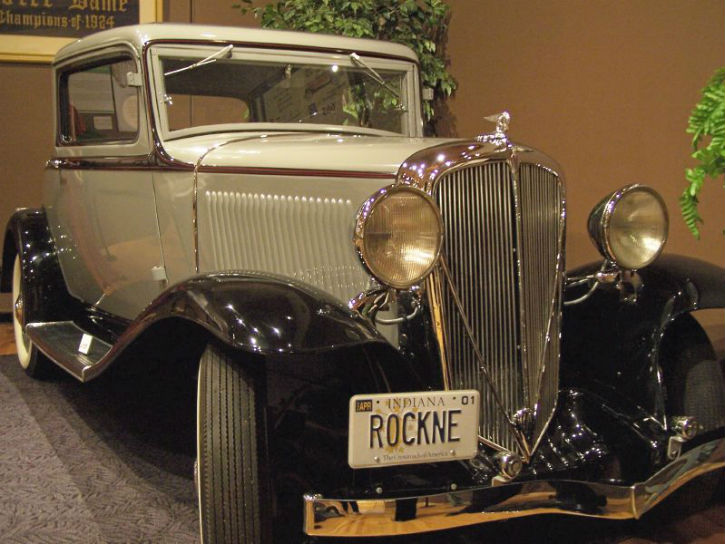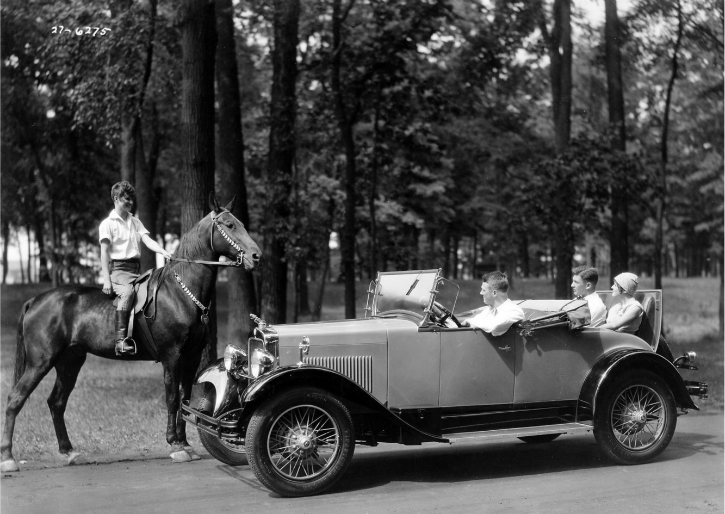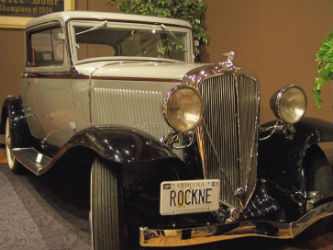
SOUTH BEND, Ind. (AP) – The Studebaker Corporation made its first foray into the market for lower-priced automobiles in 1927.
It didn’t go well.
Introduced as a separate brand, the Erskine – named for company president Albert R. Erskine – sought to compete with General Motors’ Pontiac and Chrysler’s Plymouth as low-cost companions to their makers’ more expensive models.
“One of the Erskine’s downfalls was it was not the best choice in the automotive field,” Studebaker National Museum archivist Andrew Beckman says. “It was overpriced, underpowered.”
The Erskine cost $995 in 1927 – $14,217 in 2019 dollars. Studebaker manufactured 95,104 Erskines during the brand’s four-year run from 1927 to 1930.
By contrast, Ford’s Model A debuted in 1928 at $525. Through its four production years, Ford manufactured 4,858,644 Model As, according to Wikipedia.
“Suddenly you had a car that was handsome looking that was roughly the same size and much more durable,” Beckman says about the Model A, “so you really had to want the Erskine.”
But Studebaker persisted, and the Erskine, its successors and a few of their competitors form the basis for the exhibit “Reaching the Masses: Studebaker Companion Models” through March 1 at the museum.

Studebaker made its next attempt at an economy car with the 1932 Rockne, named for Knute Rockne, the recently deceased University of Notre Dame football coach and Studebaker employee.
“The Rockne was actually an excellent automobile,” Beckman says. “Unfortunately, in the throes of the Great Depression and trying to put food on the table, finding money for an automobile wasn’t on (people’s) radar. The Rockne was an excellent automobile, but the timing was bad.”
The 1932 Rockne “65” sold for $585, while the Rockne “75” sold for $685 – $10,983 and $11,390, respectively, in 2020 dollars – whereas Studebaker’s most expensive 1932 model, the seven-passenger President, sold for $1,990 ($37,361 today).
As with the Erskine, the Rockne appeared not as a Studebaker model but as a separate brand. It lasted just two years, with only one model, the “65” renamed a “10,” in 1933.
And like the Erskine, it stalled, too, although Studebaker marketing materials from 1932 belied reality: As of Nov. 1, 1932, 21,500 vehicles had been sold and it was the eighth-bestselling model of its year, a period placard in the exhibit boasts.
Those numbers, Beckman says, need to be put into the context of the times.
A loyal Studebaker customer, for example, may have wanted to buy a Studebaker Six, whose cheapest model was $840, but settled for the less expensive Rockne.
“If you look at Studebaker production across the board, the industry in general, production was just dropping like a rock,” he says about 1932, one of the worst years of the Great Depression. “That may sound good relative to the industry, but I’m sure they were looking to double that.”
One positive did come from the Rockne: Its engine remained in production for 28 years, the longest of any Studebaker engine. In addition to the Rockne in 1932 and ’33, the Dictator used it through 1936 or ’37, Beckman says, while the Commander used it through 1950, and it remained a truck engine through 1960.
Because the hood for the car in the exhibit is being repainted, the public can see the engine itself as part of the display.
“Durable. Almost bulletproof,” Beckman says about the engine. “You almost never heard of problems with those, and they just kept going.”
Studebaker spent the next several years studying what went wrong with the Erskine and the Rockne before the 1939 Champion made its mid-year debut.
It lived up to its name.

“Really, they took the lessons they learned from the Erskine and the Rockne to nail the Champion,” Beckman says. “The Champion was a resounding success right out of the gate. In the shortened 1939 year, they almost sold more Champions than they did everything else in 1938.”
The full-year 1940 model cemented its place in the automaker’s line: Studebaker built 67,000 Champions, which accounted for 60 percent of the automaker’s production. The model remained in production until 1958.
“I think they learned from the Erskine that the product has to be there,” Beckman says. “You need to have a solid product that’s desirable to the public.”
The failure of the Rockne also taught Studebaker valuable lessons.
“I think they felt they shouldn’t do the startup brand but make it a Studebaker,” Beckman says. “The Studebaker brand had been around since the horse-drawn days. It had some weight.”
And the Champion backed up Studebaker’s reputation for durable, good-quality cars that it had had since the 1920s, something Beckman knows from experience: The Champion his great aunt bought new is still in his family, and he’s driven it.
“The car just feels balanced,” he says. “It’s got plenty of power. I’m not comparing it to what we drive today, but for cars of the period, it feels nimble. It’s a peppy car. It’s fuel efficient. It feels more modern than it is.”
Studebaker, Beckman says, delivered more than it promised with the Champion: “I heard it from one of our life trustees and he heard it from, I think, Studebaker executive Otto Klausmeyer: ‘It was the right car at the right time at the right price.”’
If you go:
– What: “Reaching the Masses: Studebaker Companion Models”
– Where: Studebaker National Museum, 201 Chapin St., South Bend.
– When: through March 1
– Hours: 10 a.m. to 5 p.m. Mondays through Saturdays and noon to 5 p.m. Sundays
– For more information: Call 574-235-9714 or 888-391-5600 or visit studebakermuseum.org
___
By ANDREW S. HUGHES, South Bend Tribune
Source: South Bend Tribune
Copyright 2020 Associated Press. All rights reserved. This material may not be published, broadcast, rewritten, or redistributed.
AP-WF-01-08-20 2037GMT


